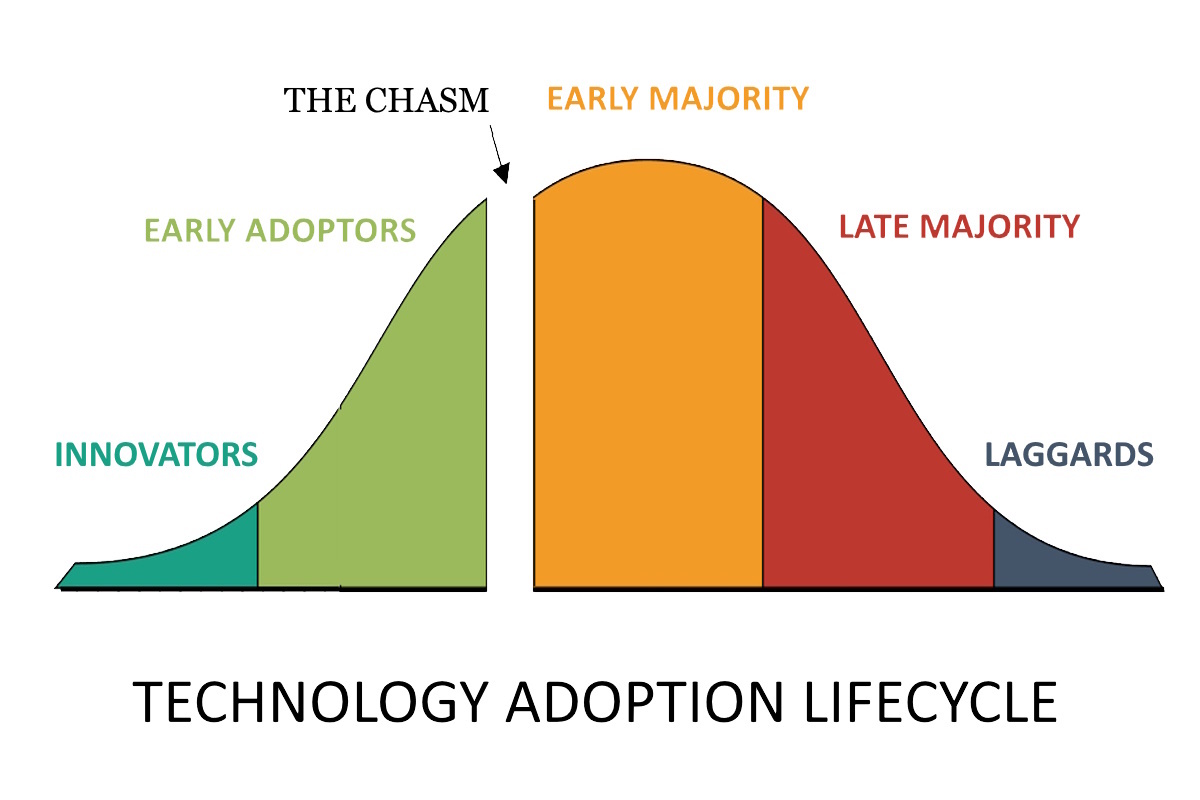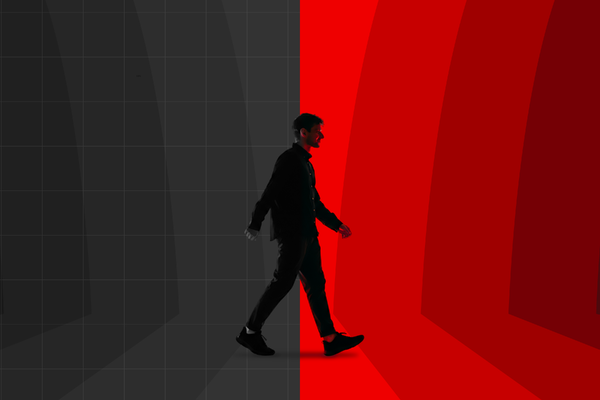Using the technology adoption lifecycle to overcome blocks

David Halliwell at Pinsent Masons Vario explains how to use Moore’s technology adoption life cycle to understand your pace of change
When you think of businesses resistant to change, law is often a profession which comes to mind – steeped in tradition, ethics and regulation. However, law as a profession is currently undergoing huge and near constant change, as new entrants to the market, innovative technology offerings and changing board profiles mean lawyers are expected to do more, with less and provide efficiencies for clients.
So how do you navigate the need for transformation and the introduction of new technologies and processes whilst ensuring everyone is brought along?
It’s important to understand the individual personalities within your team and how they’re likely to adapt to change, but also the personality of the business – culture can play such a huge part in how change is received; either with optimism and enthusiasm or caution and derision.
This will often depend on how change has been introduced in the past and if people feel burnt by the experience. For in-house legal teams, difficulties can arise as they may recognise the need for transformation, but they have to weigh up not just the personalities in their team but the stakeholders across the broader business.
This can affect what’s possible and the pace of change – especially if an element is needed to explain how technology could improve efficiency in an area such as discovery, for example.
Using the technology adoption life cycle graph by tech pioneer Gordon Moore to plot individuals’ attitudes can be a helpful way of recognising where you are as a team and formulating specific strategies to ensure permanent change from new technology, a process or a new way of using people power.
Moore recognised that early and late adopters of new ideas have very different outlooks and expectations from each other, and also from the innovators and the early adopters, and he looked at how a new product can be positioned so it appeals to the businesses and individuals with differing mindsets, suggesting separate approaches to embed new methods with each group.
The technology adoption life cycle explained
Gordon Moore, co-founder of Intel Corporation, held that the number of transistors in an integrated circuit (commonly known as a chip or a microchip) - doubles every two years. It was known as “Moore’s Law” and held true for 50 years.
Less familiar but of more everyday relevance to the roles of most professionals, is his application of the technology adoption life cycle. This model originated from research in the 1950s on the adoption of new farming methods, and Moore adapted it for identifying the characteristics of the groups who adopt a new technology at different points in its maturity.
The cycle tracks how, at the beginning, innovators – companies or individuals - pursue new technologies ‘aggressively’ to gain an early advantage. They are in the minority. Over time, these enthusiastic innovators are followed by early adopters, as more embrace the new ideas.
It is a while before the solution proves itself, at which point the cycle picks up pace, with the early majority getting on board, before the late majority join the market. This group are those who wait and see, and adopt a new approach or technology once it’s been firmly established and the benefits are clear. Making up the full cycle are the “laggards” – those who reluctantly adopt new ideas, if they ever do.
Moore’s insight was to recognise a gap – the so-called Moore Chasm - which presents itself between early adopters and the early majority. This hiatus is caused by new technologies and approaches simply proving too hard to use, relative to their benefits, and as a consequence, they simply fade away. They never get adopted by the majority, and their benefits remain unrealised.
Moore wrote about this in Crossing the Chasm: Marketing and Selling High-Tech Products to Mainstream Customers in 1991. Across the technology sales business, it is a “bible” of wisdom and techniques. But the lessons and issues are just as relevant to all who want to introduce a new way of doing things – and not just those based on IT.
Moore’s model and how to approach change
Choose carefully where you are going to start – you need to engage the enthusiasts and the early adopters to get anywhere, but be clear on what you are going to roll out first. Build through your knowledge of your business and its people and trust your judgement. It’s also important you know your stakeholders and what value means to them.
Recognise that word of mouth is still the best way to persuade others to change. Enable, facilitate and broadcast good news and success stories. Be relentless!
When affecting change, be ready and move slowly. Build your data sets, a good understanding of business requirements, risk tolerances and stakeholder needs.
Even if you are rolling out only parts at first, be clear what might be coming next and later. The enthusiasts and early adopters will want to know what the whole solution looks like – where are you going?
Finally, make the new “thing” and information about it easy to access. If people have to seek it out, that in itself will be a barrier to getting on. Training is key and microlearning, rather than an ‘attend-all’ lunchtime session can be a better way to bed-in knowledge.
Why it’s so helpful to businesses
The application of this lesser-known theory from Moore could be particularly helpful to many businesses as they make tricky decisions about how to change to keep up with the rapidly evolving world. Knowing where the team as a whole and the individuals within it sit on the graph will impact how change is approached and also helps set expectations at the outset.
It’s certainly true that for businesses and particularly lawyers, it’s a tricky landscape at the moment. There are so many options and you need to decide how to ensure the right work is done by the right resource - i.e. define a new delivery model.
It’s about having the courage of conviction to push for change. It means deciding when to access technology, deploying people at the right time and delivering productivity and efficiencies while also focusing on risk mitigation. This will likely be a bespoke delivery model which balances people, process and tech.
So for those responsible for change in legal, it’s a heavy burden and no wonder change isn’t always implemented by enough people to make the change stick.
This is why incremental change and a slow pace can often be the best route forward. We see this in Managed Legal Services for instance, as this model provides a way for legal teams to make sure the right level of resource is working on the right task, freeing the legal team to move forward.
It’s a familiar, people-based solution which also allows legal teams to access tech and processes for efficiency. It therefore short-circuits the urgency around building change from within but also acts as a long-term delivery model as workloads increase.
Although the changes businesses are dealing with today are new and highly innovative, It’s evident that Moore’s legacy lives on. Whilst new technologies come and go and are unrecognisable from what was around when Moore wrote about this in 1991, the way people react to change and his approaches to technology adoption are still as helpful and relevant today.
David Halliwell is a Partner in the Managed Legal Services team at Pinsent Masons Vario
Main image courtesy of iStockPhoto.com

Business Reporter Team
Most Viewed
Winston House, 3rd Floor, Units 306-309, 2-4 Dollis Park, London, N3 1HF
23-29 Hendon Lane, London, N3 1RT
020 8349 4363
© 2025, Lyonsdown Limited. Business Reporter® is a registered trademark of Lyonsdown Ltd. VAT registration number: 830519543





